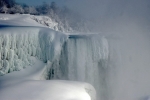High Hypopnea vs. Mask Type
High Hypopnea vs. Mask Type
Hi y'all. I've been experimenting and capturing data for a month now and, had to use my backup WISP nasal mask for a week in lieu of my usual Swift FX pillows mask. The data, surprising me, shows a consistent reduction (of -1 to -1.5 cmH20) in Hypopnea almost every day that I used the WISP nasal. Note: My AHI (I use a S9 VPAP Adapt) is consistently in the 1 to 2 range, so Hypopnea is usually all I see.
Can anybody make any sense of the reduction in hypopnea perhaps being a function of mask type? --or anything else?
Might mask leak have a lot to do with this? Using the Swift FX, my 95% and Median leaks averaged 45 and 14 L/min respectively. Using the WISP, my 95% and Median leaks averaged 26 and 7 L/min respectively.
Can anybody make any sense of the reduction in hypopnea perhaps being a function of mask type? --or anything else?
Might mask leak have a lot to do with this? Using the Swift FX, my 95% and Median leaks averaged 45 and 14 L/min respectively. Using the WISP, my 95% and Median leaks averaged 26 and 7 L/min respectively.
_________________
| Mask: DreamWear Nasal CPAP Mask with Headgear |
| Additional Comments: Machine: AirCurve 10 ASV (37043), Software:ResScan 5.7.0.9477, SleepyHead V1.00BETA2, Oximeter:CMS-50i |
Last edited by Papit on Wed Apr 29, 2015 3:31 pm, edited 1 time in total.
Machine: AirCurve 10 ASV, Mask: AirFit N30i
PulseOx Data-transfer to OSCAR4-23-12http://tinyurl.com/nzd64gu
Wireless SD Card Data-transfer to OSCAR 8-14-15http://tiny.cc/z1kv8x
PulseOx Data-transfer to OSCAR4-23-12http://tinyurl.com/nzd64gu
Wireless SD Card Data-transfer to OSCAR 8-14-15http://tiny.cc/z1kv8x
- Jay Aitchsee
- Posts: 2936
- Joined: Sun May 22, 2011 12:47 pm
- Location: Southwest Florida
Re: High Hypopnea vs. Mask Type
I think leaks may very well be a contributing factor. The 95% rate of 45 seems high. Without looking it up, I think ResMed states the machine can only compensate and produce valid data up to around 35.
_________________
| Mask: AirFit™ P10 Nasal Pillow CPAP Mask with Headgear |
| Additional Comments: S9 Auto, P10 mask, P=7.0, EPR3, ResScan 5.3, SleepyHead V1.B2, Windows 10, ZEO, CMS50F, Infrared Video |
Re: High Hypopnea vs. Mask Type
I think red line is 24, anything over that is large leak.
_________________
| Machine: ResMed AirCurve 10 ASV Machine with Heated Humidifier |
| Mask: Evora Full Face Mask - Fitpack |
| Additional Comments: AirCurve 10 ASV, Oscar V1.0.1-r-1 |
US Navy Retired 1973,AirCurve 10 ASV, Mode: ASV Auto, Min EPAP: 7.2, Max EPAP: 15.0, Min PS:4.0, Max PS: 15.0, Mask ResMed Airtouch F20, Backup: (2) AirCurve 10 ASV
- Jay Aitchsee
- Posts: 2936
- Joined: Sun May 22, 2011 12:47 pm
- Location: Southwest Florida
Re: High Hypopnea vs. Mask Type
From the ResScan Report Guide
Which further goes on to imply that leaks >= 30 L/min constitute "high level" for data reporting as apposed to the default red line threshold of 24 L/min.In the presence of a high level of unintentional
leak, the AHI value cannot be
analyzed correctly. First, you need to
solve the leak issue.
_________________
| Mask: AirFit™ P10 Nasal Pillow CPAP Mask with Headgear |
| Additional Comments: S9 Auto, P10 mask, P=7.0, EPR3, ResScan 5.3, SleepyHead V1.B2, Windows 10, ZEO, CMS50F, Infrared Video |
Re: High Hypopnea vs. Mask Type
they like to keep it under 24, the higher it is over 24, the more iffy the detection becomes, I think over 30 the machines are more likely to report unknown apneas as opposed to determining whether it's central or obstructive.Jay Aitchsee wrote:From the ResScan Report GuideWhich further goes on to imply that leaks >= 30 L/min constitute "high level" for data reporting as apposed to the default red line threshold of 24 L/min.In the presence of a high level of unintentional
leak, the AHI value cannot be
analyzed correctly. First, you need to
solve the leak issue.
Get OSCAR
Accounts to put on the foe list: dataq1, clownbell, gearchange, lynninnj, mper!?, DreamDiver, Geer1, almostadoctor, sleepgeek, ajack, stom, mogy, D.H., They often post misleading, timewasting stuff.
Accounts to put on the foe list: dataq1, clownbell, gearchange, lynninnj, mper!?, DreamDiver, Geer1, almostadoctor, sleepgeek, ajack, stom, mogy, D.H., They often post misleading, timewasting stuff.
Re: High Hypopnea vs. Mask Type
Papit,Papit wrote:Can anybody make any sense of the reduction in hypopnea perhaps being a function of mask type? --or anything else?
Might mask leak have a lot to do with this? Using the Swift FX, my 95% and Median leaks averaged 45 and 14 L/min respectively. Using the WISP, my 95% and Median leaks averaged 26 and 7 L/min respectively.
You are using a Resmed machine. So any leak over 24 L/min is a large leak. The worst of your leaks with the Swift FX are well into the territory where the Resmed you are using is going to have trouble tracking your breathing and figuring out what the heck is going on. The worst of your leaks with the Wisp are barely into the Official Large Leak territory, and the machine is probably not too confused.
While the median leaks for both masks are well below the 24 L/min RedLine, the Swift FX median of 14 L/min is pretty big for a median leak rate. Your leaks are AT or ABOVE 14 L/min for 50% of the night with the Swift FX and they are AT or ABOVE 45 L/min for at least 5% of the night. There's a pretty good chance that when you are using the Swift FX that your leaks are above 24 L/min for a significant part of the night and that you may be well above 24 L/min for a significant part of the night.
The combination of the median = 7 L/min and the 95% = 26 L/min for the Wisp indicates that there is a much lower probability that you are spending significant amounts of time with the leak over 24 L/min and that you are spending almost no time significantly above 24 L/min.
But to really get a handle on just how much the leaks are affecting the efficacy of your therapy when you use the Swift FX, we would need to see some typical leak graphs as shown in SleepyHead or ResScan. Unless we see the whole night, it's really impossible to tell just how bad your large leaks are when you use the Swift FX.
_________________
| Machine: DreamStation BiPAP® Auto Machine |
| Mask: Swift™ FX Nasal Pillow CPAP Mask with Headgear |
| Additional Comments: PR System DreamStation and Humidifier. Max IPAP = 9, Min EPAP=4, Rise time setting = 3, minPS = 3, maxPS=5 |
Re: High Hypopnea vs. Mask Type
You are one clear-headed gal, robysue. I like the way you help out by walking people through your analyses.
Thank you and ditto to you other guys who responded. You all seem to be saying much the same thing. And I understand where you're coming from. After all, that's what ResMed has in their literature.
I think members here (most of us anyway) have been well aware for a long time that leaking masks make it more difficult for our machines to be effective. Certainly. But these machines are purposely designed to work with leaks. I'm not at all sure though that leakage numbers up at 40 L/min are seriously fouling up machine effectiveness -- as badly as most in the thread seem to think. I'm sort of like Pugsy on the topic and shrug it off unless the leaks get much higher. Nights when leakage gets above 40 or 50 L/min do get my attention, not the "24" that ResMed talks about in their public guidance. Maybe I'm being a bit too sanguine, I don't know.
But I'll take you up on posting my leak graphs so you can see how it looks throughout the night. Thanks again. Here's some nice Latin music I've been listening to when in the forum. It adds to the fun! https://www.youtube.com/watch?v=ZBVR6yxj1I8
Thank you and ditto to you other guys who responded. You all seem to be saying much the same thing. And I understand where you're coming from. After all, that's what ResMed has in their literature.
I think members here (most of us anyway) have been well aware for a long time that leaking masks make it more difficult for our machines to be effective. Certainly. But these machines are purposely designed to work with leaks. I'm not at all sure though that leakage numbers up at 40 L/min are seriously fouling up machine effectiveness -- as badly as most in the thread seem to think. I'm sort of like Pugsy on the topic and shrug it off unless the leaks get much higher. Nights when leakage gets above 40 or 50 L/min do get my attention, not the "24" that ResMed talks about in their public guidance. Maybe I'm being a bit too sanguine, I don't know.
But I'll take you up on posting my leak graphs so you can see how it looks throughout the night. Thanks again. Here's some nice Latin music I've been listening to when in the forum. It adds to the fun! https://www.youtube.com/watch?v=ZBVR6yxj1I8
_________________
| Mask: DreamWear Nasal CPAP Mask with Headgear |
| Additional Comments: Machine: AirCurve 10 ASV (37043), Software:ResScan 5.7.0.9477, SleepyHead V1.00BETA2, Oximeter:CMS-50i |
Machine: AirCurve 10 ASV, Mask: AirFit N30i
PulseOx Data-transfer to OSCAR4-23-12http://tinyurl.com/nzd64gu
Wireless SD Card Data-transfer to OSCAR 8-14-15http://tiny.cc/z1kv8x
PulseOx Data-transfer to OSCAR4-23-12http://tinyurl.com/nzd64gu
Wireless SD Card Data-transfer to OSCAR 8-14-15http://tiny.cc/z1kv8x
Re: High Hypopnea vs. Mask Type
you are sadly mistaken of you think pugsy shrugs off leaks above 24lpm on a resmed machine.Papit wrote: I'm sort of like Pugsy on the topic and shrug it off unless the leaks get much higher.
Get OSCAR
Accounts to put on the foe list: dataq1, clownbell, gearchange, lynninnj, mper!?, DreamDiver, Geer1, almostadoctor, sleepgeek, ajack, stom, mogy, D.H., They often post misleading, timewasting stuff.
Accounts to put on the foe list: dataq1, clownbell, gearchange, lynninnj, mper!?, DreamDiver, Geer1, almostadoctor, sleepgeek, ajack, stom, mogy, D.H., They often post misleading, timewasting stuff.
Re: High Hypopnea vs. Mask Type
I shrug off big leaks that are brief and don't wake me up.
5 minutes at 30 L/min or above on a Resmed machine I don't worry about but 50 minutes I would start trying to fix it if I saw it often.
So I look at duration first...then how much. I rarely look at the 95% leak number itself because it is easily skewed to look worse than things might really be. I eyeball the leak graph to see
1...did I exceed the red line?
2...how far did I go?
3...how long was I up there.
I once had a leaky night that was really worse than others and got a chance to see the progression from slightly above 24 L/min to up to 40 L/min over a couple of hours. It was quite interesting because I could see the machine gradually lose control of the situation. Up to 30 L/min the machine seemed to record and respond appropriately but around 30 L/min I started seeing "unknown apneas" all over the place...so the machine knew something was going on but couldn't tell exactly what...and it got worse as the leak got worse...over 35 L/min and there was a big blank space and I am pretty sure that stuff was happening because a truckload of it was happening in "unknowns" at 32 L/min leak. So events were likely happening and not getting flagged.
If Mr Frowny face shows up...that's a lot of big leaks and they are prolonged too. That's 30% or more of the night in big leak. I have only had one night where my leaks were that bad and it was due to headgear simply finally giving up the ghost and the mask wouldn't stay in place and I woke up multiple times due to mask movement.
Yes, I will let a little bit of big leak slide if I sleep through it and it isn't overly prolonged but even my own personal line in the sand is 10 % of the night in big leak...if I saw more than that continually then I would take steps to fix it.
As it is, according to SleepyHead my average time in large leak territory over the past year is a whopping 0.07 %.
I don't worry about the 25 to 30 L/min too much because I think the machine still does a very decent job and the data is very likely reliable but above 30 it does start getting iffy and above 35 then pretty much all bets are off and I wouldn't let that slide if I saw it happening often and for prolonged durations even if I slept right through it.
5 minutes at 30 L/min or above on a Resmed machine I don't worry about but 50 minutes I would start trying to fix it if I saw it often.
So I look at duration first...then how much. I rarely look at the 95% leak number itself because it is easily skewed to look worse than things might really be. I eyeball the leak graph to see
1...did I exceed the red line?
2...how far did I go?
3...how long was I up there.
I once had a leaky night that was really worse than others and got a chance to see the progression from slightly above 24 L/min to up to 40 L/min over a couple of hours. It was quite interesting because I could see the machine gradually lose control of the situation. Up to 30 L/min the machine seemed to record and respond appropriately but around 30 L/min I started seeing "unknown apneas" all over the place...so the machine knew something was going on but couldn't tell exactly what...and it got worse as the leak got worse...over 35 L/min and there was a big blank space and I am pretty sure that stuff was happening because a truckload of it was happening in "unknowns" at 32 L/min leak. So events were likely happening and not getting flagged.
If Mr Frowny face shows up...that's a lot of big leaks and they are prolonged too. That's 30% or more of the night in big leak. I have only had one night where my leaks were that bad and it was due to headgear simply finally giving up the ghost and the mask wouldn't stay in place and I woke up multiple times due to mask movement.
Yes, I will let a little bit of big leak slide if I sleep through it and it isn't overly prolonged but even my own personal line in the sand is 10 % of the night in big leak...if I saw more than that continually then I would take steps to fix it.
As it is, according to SleepyHead my average time in large leak territory over the past year is a whopping 0.07 %.
I don't worry about the 25 to 30 L/min too much because I think the machine still does a very decent job and the data is very likely reliable but above 30 it does start getting iffy and above 35 then pretty much all bets are off and I wouldn't let that slide if I saw it happening often and for prolonged durations even if I slept right through it.
_________________
| Machine: AirCurve™ 10 VAuto BiLevel Machine with HumidAir™ Heated Humidifier |
| Additional Comments: Mask Bleep Eclipse https://bleepsleep.com/the-eclipse/ |
I may have to RISE but I refuse to SHINE.
Re: High Hypopnea vs. Mask Type
Here are SleapyHead screen shots of two recent night's sleep. (The flow limitations are an old story that remain a mystery.) I typically set the red line flag at 40 L/min. It remains unclear to me that leaks around 40 can be a major challenge for the S9 VPAP Adapt in the presence of producing such low AHI. Note that the machine produces the same low AHI performance when leaks are between 0 and 24 L/min.robysue wrote: Papit,
. . . But to really get a handle on just how much the leaks are affecting the efficacy of your therapy when you use the Swift FX, we would need to see some typical leak graphs as shown in SleepyHead or ResScan. Unless we see the whole night, it's really impossible to tell just how bad your large leaks are when you use the Swift FX.

And here's the next night:

_________________
| Mask: DreamWear Nasal CPAP Mask with Headgear |
| Additional Comments: Machine: AirCurve 10 ASV (37043), Software:ResScan 5.7.0.9477, SleepyHead V1.00BETA2, Oximeter:CMS-50i |
Machine: AirCurve 10 ASV, Mask: AirFit N30i
PulseOx Data-transfer to OSCAR4-23-12http://tinyurl.com/nzd64gu
Wireless SD Card Data-transfer to OSCAR 8-14-15http://tiny.cc/z1kv8x
PulseOx Data-transfer to OSCAR4-23-12http://tinyurl.com/nzd64gu
Wireless SD Card Data-transfer to OSCAR 8-14-15http://tiny.cc/z1kv8x











